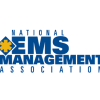A group of fire organizations, the Fire Suppression Funding Solutions Partner Caucus, is seeking $400 million in emergency supplemental funding for the Federal Land Assistance, Management, and Enhancement (FLAME) Act account.
The FLAME Act, passed in 2009, established a targeted fund so the US Forest Service would have sufficient monies to fight wildland fires without cutting into programs that provide recreation and preserve forest habitat and health. But Congress raided the fund in 2011 and 2012 for other purposes, and the Forest Service’s total budget has decreased as well. Faced with multiple large fires this year, Tom Vilsack, secretary of the Department of Agriculture, sought congressional approval of his plan to transfer $400 million from non-fire sources to the fire suppression account.
The Partner Caucus reacted to Vilsack’s proposal by writing to the committees with jurisdiction in the House and Senate, asking that $400 million in emergency funding go to the FLAME Fund and that it come from non-fire programs.
The Partner Caucus letter is at here.
MedPAC Considers Recommendations to Congress
The Medicare Payment Advisory Commission (MedPAC) met in September in Washington, D.C., and spent a portion of its meeting considering its recommendations to Congress on Medicare ambulance reimbursement policy. Among its considerations are the appropriateness of the temporary ambulance fee add-on payments, whether a new base rate should be established that includes the add-ons, and the possible need to reform the fee schedule entirely.
Although MedPAC was directed to report to Congress on June 15, 2013, commissioners plan to vote on its final recommendations before Dec. 31, 2012, when the temporary ambulance fee add-on payments are scheduled to expire. MedPAC was directed to report to Congress on Medicare margins and the inclusion of temporary Medicare ambulance relief in the base and mileage rates in a provision of the Middle Class Tax Relief and Job Creation Act of 2012.
Meanwhile, the Joint National EMS Leadership Forum, a coalition of EMS organizations, wrote to MedPAC reminding the commissioners of the chronic under-reimbursement of ambulance services by Medicare and the importance of an adequately funded EMS system. The EMS coalition letter also reminded commissioners of the 2007 Government Accountability Office findings that ambulance service providers are reimbursed by Medicare an average of 6 percent below their costs on general runs and 17 percent less on super-rural runs.
The letter is here.
National Biosurveillance Strategy Released
The first “National Strategy for Biosurveillance” was released by President Obama in July, building on existing capabilities and institutionalizing information-sharing among all levels of government, the private sector, non-governmental organizations and international partners.
The Strategy describes the core functions and critical capabilities required to identify and act on natural or intentional national health threats quickly and contains four principles designed to enhance the nation’s biosurveillance enterprise:
- Leverage existing capabilities
- Embrace an all-of-nation approach
- Add value for all participants
- Maintain a global health perspective
The Administration will present specific action steps in a forthcoming implementation plan to be released prior to 2013.
The Strategy is here.
Broadband Implementation Grants Announced
The National Telecommunications and Information Administration (NTIA) announced in August preliminary details of its new grant to help states implement a nationwide public safety broadband network. The network was authorized by the Middle Class Tax Relief and Job Creation Act of 2012, which also charged NTIA with establishing this grant program to assist state and local jurisdictions with identifying, planning and implementing the means to use and integrate the infrastructure, equipment and other architecture of the national network.
In announcing the State and Local Implementation Grant Program, NTIA plans to make the grants formula-based, with matching requirements. The agency will likely ask for states’ plans for collaboration with local jurisdictions to ensure those public safety needs are considered; it also will consider how existing public safety and planning authorities will be leveraged into the consultation.
The first grant phase will fund initial planning and consultation activities; the second will help states prepare to undertake data collection activities. All 56 states and territories are eligible for grants. Funds will likely not be awarded for activities related to site preparation, broadband deployment or equipment acquisition.
Up to $135 million in grant funds will be available for the program; NTIA will release a Federal Funding Opportunity notice and open the application window in early 2013.
The NTIA notice is here.
NIOSH Collecting EMS Injury Data
In collaboration with the National High Traffic Safety Administration, Office of Emergency Medical Services, the National Institute for Occupational Safety and Health (NIOSH) is collecting data on EMS injuries and illnesses using an occupational supplement to the National Electronic Injury Surveillance System (NEISS). Among all of the patients in the project treated at its 65 participating hospitals nationwide, NEISS Work, as the project is known, will gather data from EMS patients in order to categorize their most common injuries.
Data from the most current phase of the NEISS project will begin to be posted in the next few months on a new website devoted to EMS workers’ health and safety, developed and published by NIOSH. In addition to reports and publications covering the injuries that affect EMS responders, the website provides detailed information on safely handling specific toxic substances and links to related health and safety resources.
The website is here.












